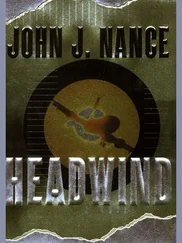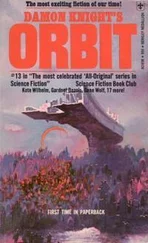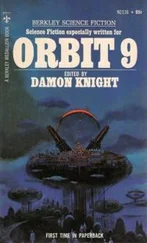“Richard, you, of all people, know how risky this so-called business is. The forces involved, the explosive power, the number of life support things that can go wrong. I mean, we’re vastly more reliable than the shuttle could ever be, but… we’ve been hanging it out from the first.”
“I know, I know. It’s just…”
“We’ve all deluded ourselves into thinking we couldn’t actually lose one. We’ve had so many successful launches.”
“But we haven’t lost them yet. At least, we don’t know, right?”
“True, but a word of warning, okay? I mean, I’m only your flight director, but when this blows into the public eye, we’d better not be heard kvetching about the financial losses.”
“Of course not. I’ve got Diana inbound right now. We’ll put together a quick strategy.”
“It’s gonna leak, Richard.”
“I know it.”
“It’s gonna leak, and the media is going to smell blood and be all over it, and I don’t have a clue what to say or do… other than wait and watch and lean on NORAD and NASA for more information. We’re trying the radios constantly, but if we see the capsule turn around in position for retrofire, or if, at the end of the fourth orbit, it actually does retrofire, then we know for certain someone’s alive up there and following the checklists and we’ve got a chance.”
“Has someone called Campbell’s wife?”
“Yeah, I have. It was brutal. She’s tough, but she’s scared to death.”
“And… our passenger?”
“Dawson. Kip Dawson. We’re holding off for another hour or so before we call his wife.”
“For God’s sake, don’t wait too long. Don’t let her hear it from the media.”
“No. No, we won’t.”
“So what are you waiting for?”
“The end of Orbit Two. I figure… without any rational reason… I figure if Bill’s alive and functional, he’ll want to get the hell out of there as soon as possible, and when he passes through the window for second orbit return, that’s when I’d expect something to happen.”
“How much longer?”
“Twenty-three minutes from now. At least that’s the end of the window. Otherwise, he overshoots California, or worse.”
“But we still have two more orbits before it has to come down, right?”
“They could go longer. We figure they could keep breathing up there for, roughly three days, or a bit less.”
“Before the CO 2scrubbers saturate?”
Arleigh is nodding. “That’s always the limit.” He gets to his feet, leaving Richard still seated. “I’d better get back in there. I’ve been whipping everybody into a thinking frenzy to see if we’ve missed anything.”
Richard nods, waving him away as he picks up the phone, then replaces it in its cradle, his eyes on the far wall as he thinks through the consequences of dialing the person he was ready to call.
Not yet. Not just yet.
ABOARD INTREPID , May 17, 10:20 A.M. PACIFIC
It’s time.
Kip powers the laptop to standby mode and reinserts the machine in its holder before gathering the checklists and positioning himself in Bill’s seat. A confusing feeling of excitement comes over him, a small rush before the sprint, he figures, his mind relieved finally to be at the threshold of action.
He runs back through the planned steps and reviews the three coordinates. Intrepid has to turn around one hundred eighty degrees to fly backward, and the pitch and roll readouts on the attitude indicator must be precisely right before firing the engine. The master keyboard is in front of him and he pulls it closer. With care he punches in the three numbers and triple checks that he’s got them right. His finger hovers shakily over the “execute” button for several seconds as he wonders if there could be anything he’s forgotten, then he forces his finger down, hearing a small click.
The screen changes, registering the fact that the new coordinates have been accepted, and suddenly there’s a small box proclaiming that the automatic realignment maneuver has begun.
Thank God!
He holds his breath, wondering how it is that the small reaction jets on Intrepid can be firing so gently that he can’t even feel them. It’s almost as if nothing is happening, despite the announcement on the screen.
He looks at the attitude indicator, willing it to move at least in some direction, but it’s static, the display as steady as if the whole spacecraft was sitting on some concrete floor back on the planet.
He takes in the screen, then the keyboard, and punches the execute button a second time, but still no movement. The annunciator screen indicates that everything should be working, the jets firing, and Intrepid should be turning around tail-first. Right now!
Okay, I forgot something, he decides. Complex procedures can be thwarted by one simple mistake—like getting no toast because you forgot to plug in the toaster.
What did I miss?
He runs back through the checklist, feeling a cold, creeping trickle of panic.
Focus!
One by one he reenters the coordinates, his fingers shaking visibly now as he triggers the execute button.
And once more—despite the signs on the small LED screen that all is well and working as indicated— Intrepid continues flying straight ahead and on her back. No pitch. No yaw. No roll.
No change.
Kip checks his watch. Eight minutes remain before the time for retrofire. If the automated system won’t work, all he has left is the manual control, and he alone to manipulate it.
But he’s clicked the manual control button on that joystick before, in training, electing “active mode.” And in that simulator he promptly lost control so badly they had to stop the spinning simulator. All of the instructors and fellow students were holding their sides and laughing when he climbed out, and the follow-up session wasn’t much better.
“Kip, I guess we forgot to tell you,” the instructor had heehawed. “The object was to stop the spinning, not set a new record for the highest number of revolutions per minute.”
He stares at the joystick, a tortuous, diabolical little tool that in the hands of a qualified astronaut is a singular thing of interfaced beauty, giving the ability to move in all three axes by just turning the wrist and hand.
But to an amateur, an invitation to spinning disaster.
I’m not touching that thing! he thinks, testing the words.
The spacecraft is still not turning. He thinks about entering the numbers a third time, but he’s already done it correctly twice. It’s already acknowledged his entries twice. And yet nothing automatic is happening.
I’m only on Orbit Two. I’ve got time to figure this out. I don’t have to force it right now.
The logic of waiting is impeccable, but it’s no match for his massive urge to get home now !
And without thinking he succumbs, adjusting his hand over the joystick and consciously punching the red button on top that reverts the spacecraft to manual attitude control.
He can hear his breathing rate increase, but nothing much is happening. There is a little drift now to the left, just a few degrees, and maybe a bit of roll, but he’s not sure.
Okay, time to try it.
He knows the controls are sensitive. The watchword will be moving in only one axis at a time, and he reviews the basics without moving his hand.
Push forward to pitch forward, pull to pitch up. Twist left to yaw left, right to yaw right. Nudge the entire stick left to roll left, nudge it right to roll right. Okay, which way first?
The Earth is still passing along above him, and it’s easy to see the horizon, the Earth’s curvature. So maybe he should take care of the main event first and just turn around backward before turning planet-side down.
Читать дальше











